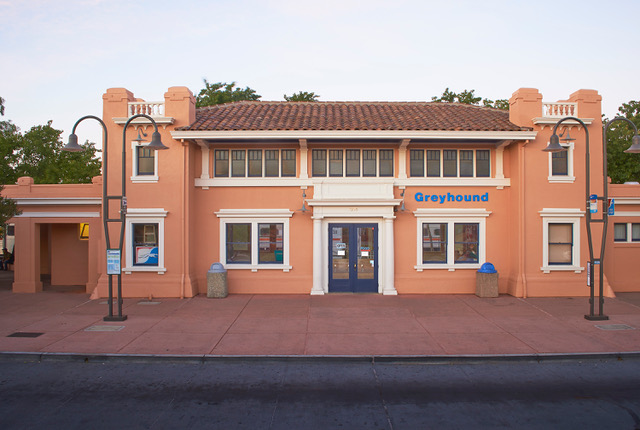Guest column by Connie Rogers: It’s vital for Gilroy to save our historic buildings for future generations
The Gilroy Southern Pacific Train Station was named to the National Register last July

The renovated train station in downtown Gilroy. Photo courtesy Gilroy Historical Society
By Connie Rogers

Connie Rogers
Is it sentiment? Is it architecture? Functionality? What do historic buildings do for us? I believe it is all of these and more. We can’t and shouldn’t save all old buildings. But those which are especially designed, well-built, well-located and the center of community activities are definitely special and worth considering for preservation. Can we be historic and modern at the same time? I believe we can by having a mixture of historic buildings adapted to modern needs and modern buildings that are compatible with the historic ones.
How do we evaluate which properties are worth preserving? The criteria for the National Register examine the property’s age, significance and integrity. Is the property old enough to be considered historic (generally 50 years)? Does it still look much the way it did in the past? Is the property associated with events, activities or developments that were important in the past? With the lives of people who were important in the past? With significant architectural history, landscape history or engineering achievements? We will find out how similar criteria were applied to Gilroy’s historic buildings later this winter when the city of Gilroy is expected to release its newly updated Historic Resources Inventory.
Historic buildings are unique, one-of-a-kind. They are more interesting and appealing than cookie-cutter chain stores. They add aesthetic and cultural value to our lives. They anchor us and provide a sense of place. And they help us understand where we came from, what made us the way we are today as a community.
A good example is the Gilroy Southern Pacific Train Station which was named to the National Register last July.
When the railroad came to Gilroy in 1869 the train station provided an important way to get local agricultural goods to a larger market, enabling Gilroy to grow and prosper. By the early 1900s this station had become ramshackle and inadequate, especially for passengers.
After Southern Pacific refused to build a new, better station a delegation of civic leaders went to Sacramento and asked the State Railroad Commission for help. The Commission ordered Southern Pacific to build our station which was completed to great fanfare in 1918. It served passengers well until 1971 when the Del Monte passenger service was discontinued. After that the station was boarded up and filled with graffiti.
In 1986 a foresighted Downtown Revitalization Committee recommended that the station become a multi-modal transportation center. Finally, VTA was able to buy the property and lease it to the city. And in 1998 the city, with the help of grants, was able to restore the station. Today it works well as our multi-modal transportation center through adaptive reuse. It is not only an example of an historic building worth saving, but an example of how we all build on efforts of those who came before us.
The Gilroy Historical Society was proud to write the rigorous application and give the National Register plaque to the train station, crediting the city with its restoration. It met the criteria in part because it is one of the few remaining stations built by Southern Pacific Railroad, a very powerful force in the development of California.
Gilroy is very fortunate to have the following eight buildings on the National Register:
Southern Pacific Rail Depot
Miller Red Barn
Carnegie Library
Old City Hall
Wheeler Hospital
Holloway House
Christian Church
Live Oak Creamery
What we need is the foresight, creativity, funding and political will to restore and re-purpose some of our other worthy candidates like the Strand Theater and the Robinson Hardware building on Monterey St.
Connie Rogers is president of the Gilroy Historical Society and was on the City Council when they voted to restore the train station.
- Guest column by Tim Davis: Two Gilroy nonprofits join forces to help those in need - April 17, 2024
- Your Retirement … with Marisa Otto: Do you know how your retirement income is getting taxed? - April 17, 2024
- Guest column by Jaci Muro: Gilroy Foundation supports young people with college scholarships - March 30, 2024
